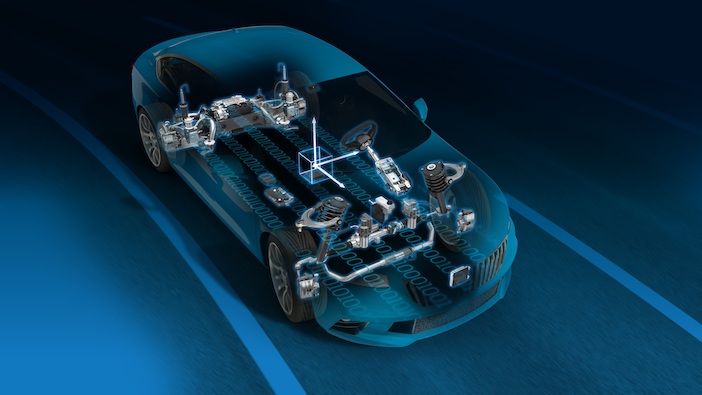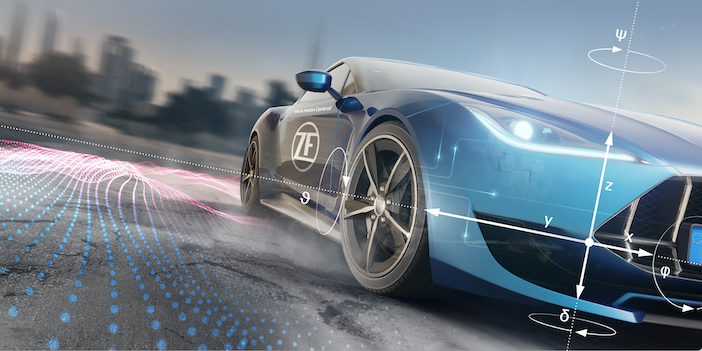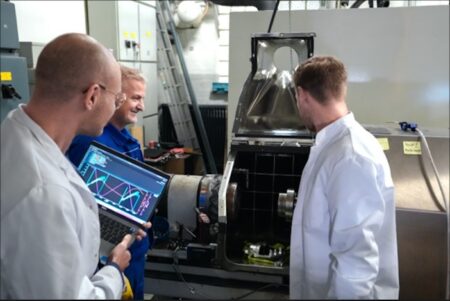Achieving harmony between the longitudinal, lateral and vertical dynamics of a vehicle is important for creating a pleasant and comfortable driving experience, a balance that is even more important for autonomous vehicles, in which the driver is less focused on driving activity and more on comfort. ZF’s engineers have been working to optimise the dynamics balance with their newly developed cubiX software – ZF’s first pure software product – which controls all chassis systems to achieve a harmonious blend of smooth acceleration and braking, precise steering, and balanced damping.
In many cases, the damping, braking and rear-axle steering systems each have their own control unit that is integrated into the overall architecture of the vehicle. Software such as cubiX is a move towards the software-defined vehicle, in which overarching domain and zone architectures replace the many individual controls for hardware components. Such setups also enable future upgrades to the software to be carried out via over-the-air updates to the vehicle, enabling it to remain up to date throughout the vehicle’s life.
The software has now been rolled out into the real world, installed in the Lotus Eletre electric SUV from the Geely Group. ZF’s cubiX software controls all chassis functions such as brakes, front and rear axle steering, active roll stabilisers, as well as the electric drive of the new sports car. Further production start-ups of the software are due to follow during 2023.

“With the series premiere of our cubiX software, we impressively demonstrate our system competence for vehicle dynamics of software-defined vehicles,” stated André Engelke, head of the vehicle motion control system division at ZF. “We can harmoniously control the entire longitudinal, lateral and vertical dynamics of the vehicle according to Lotus’ specifications. The system know-how from the entire ZF Group meets decades of experience in the fields of braking and steering systems, active dampers, and driveline technology.”
The cubiX software has been developed to optimise driving behaviour with a view to improving comfort, dynamics and efficiency, and also forms the basis for progressive driver assistance systems. The cubiX platform is compatible with various actuators such as dampers, brakes or rear-axle steering – regardless of the manufacturer or the specific design.
The new electrical and electronic vehicle architectures bundle all the software for a specific functional area of the car – known as the domain – on a central control unit. “This overarching control saves vehicle manufacturers effort as well, as compromises in fine-tuning and driving dynamics in terms of vehicle performance, comfort and efficiency. At the same time, it gives them the chance to combine complex assistance systems,” explained André Engelke. “With cubiX, we have such software that can be perfectly integrated into the new architectures.”
cubiX was developed at multiple ZF sites globally (Germany, Czech Republic, Romania, UK, India, and China), with the application project driven from the Asia Pacific region.





